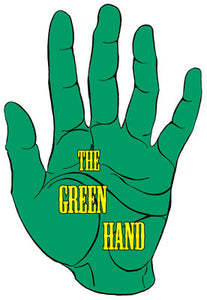
Circles of Dread by Jean Ray
Trade paperback format.
Translated, with an afterword, by Scott Nicolay
I chalked circles on the wall facing me. They are empty and black, but will not remain so.
They are great portholes opening onto a world not yet born. Worlds that are born, like those that die, are full of dread.
Trapped within its own circular prison of the Occupation and severed from contact with Paris and other countries, Belgian publishing turned inward, and forgotten authors such as Jean Ray were given new leases on literary life. Embracing the influence of American pulp fiction, Ray’s short stories found a new audience in those dark years of World War II, and what would come to be known as the Belgian School of the Strange gave voice to a realm of fear and unease that blended fantasy with a Catholic heritage and a prosaic, distinctly bourgeois everyday.
Circles of Dread, Ray’s fourth short-story collection, was first published in 1943, the same year that saw the first appearance of his best-known work, the novel Malpertuis. This collection’s portholes onto sinister fantasy include such stories as “The Marlyweck Cemetery,” “The Inn of the Specters,” and “The Story of the Wûkh.” Ray takes the reader from the quiet streets of Ghent to the scrambled streets of London to the Flinders river in Australia, with tales spun from such materials as the iron hand of Götz von Berlichingen, the black mirror of John Dee, a Moustiers ceramic plate, and the shifting, extradimensional menace of a predatory cemetery. All to illustrate, in the language of pulp fiction, that what constitutes dread is what lies outside our metaphysical prisons, some of which we may escape only at our own peril.
Jean Ray (1887–1964) is the best known of the multiple pseudonyms of Raymundus Joannes Maria de Kremer. Alternately referred to as the “Belgian Poe” and the “Flemish Jack London,” Ray delivered tales and novels of horror under the stylistic influence of his most cherished authors, Charles Dickens and Geoffrey Chaucer. A pivotal figure in the “Belgian School of the Strange,” Ray authored some 6,500 texts in his lifetime, not including his own biography, which remains shrouded in legend and fiction, much of it his own making. His alleged lives as an alcohol smuggler on Rum Row in the prohibition era, an executioner in Venice, a Chicago gangster, and hunter in remote jungles in fact covered over a more prosaic, albeit ruinous, existence as a manager of a literary magazine that led to a prison sentence, during which he wrote some of his most memorable tales of fantastical fear.
